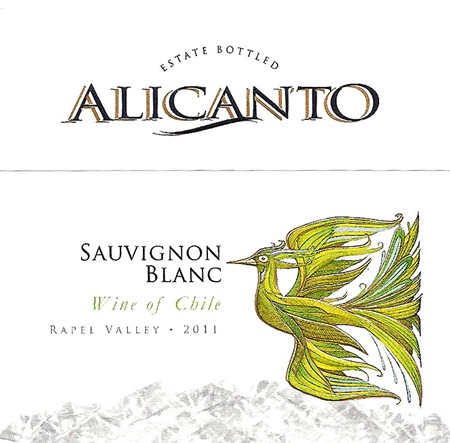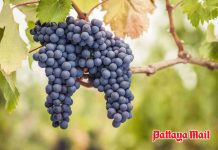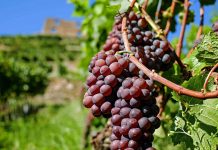Now then, here’s this week’s question. What’s an alicanto? If your answer is that an alicanto is a male inhabitant of Alicante, that sprawling city on the Costa Blanca, it would be a perfectly reasonable response and indeed, a perceptive and intelligent answer. Sadly, it would also be wrong.
You see, an alicanto (with a lower case letter “a” rather than upper case) is a mythological nocturnal bird from Chile’s Atacama Desert. Its wings shine at night with hypnotic, metallic colours and its eyes emit strange lights. The bird has a somewhat unusual diet of gold and silver which gives its feathers a metallic sheen. To facilitate eating, it has a metallic beak with which it can break a stone apart to reveal the gold and silver ore inside.

Just in case you think I am making all this up, I should mention that the Atacama Desert is known for its rich mineral resources of gold, silver, copper and iron as well as minerals including boron, sodium nitrate and metallic lithium. You may remember the frequent mention of di-lithium crystals in Star Trek. Perhaps this is where they came from. Even today, you can find the remains of old mining town, some dating back to the end of the nineteenth century.
Anyway, where was I? (Somewhere in the desert, I think. Ed.) Alicantos live in caves and if you managed to follow one home (assuming you could fly) you would find a stash of gold and silver, or so the saying goes. The Atacama miners were evidently terrified of alicantos. It was rumoured that any miner who got caught by an alicanto was hypnotized by its flapping wings and saw shimmering silver and gold visions just out of reach. The enraged alicanto would then lure the unfortunate miner to a cliff, where he was unceremoniously shoved over the edge, accompanied no doubt by a squawk of satisfaction.
Because of its gourmet metallic diet, the locals have learned not to roam around at night carrying gold or silver objects. So if you ever find yourself in the Atacama Desert (which incidentally has the dubious reputation of being the driest place in the world) leave the bling at the hotel. (I thought this was supposed to be a wine column? – Ed.) Ah yes. I knew there was something I wanted to tell you. I almost forgot – two splendid wines from Chile.
Alicanto Sauvignon Blanc 2013 (white) Chile (Bt. 580 @ Friendship)
The Sauvignon Blanc (SOH-vee-nyon BLAHN) grape takes its name from the French word sauvage (“wild”) because left to its own devices, it would grow wild. Delicate their wines are not, because the Sauvignon grape is known for its ability to produce sharp, lively wines with spiky acidity. Unlike Chardonnay with its aromas of buttery roundness, Sauvignon smells of grass, hay, green herbs and flint. Some New Zealand Sauvignons are noted for their astringent, toe-curling flavours. The classic Sauvignons from the Loire sometimes even smell of cat’s pee, which you might be surprised to know, is considered a positive attribute among connoisseurs. In contrast, I’ve tasted a lot of New World Sauvignons during the last few months which were rather tame, with all the stuffing knocked out of them. Now I am all for making a wine which is pleasantly drinkable, but not to the extent that the grape’s individual character is lost in the process.
I mention all this because the Alicanto Sauvignon Blanc is very true to form. The wine is a pale gold colour with greenish hues and a distinctive aroma of passion fruit and pomelo (that’s the one that tastes vaguely like grapefruit). Unless you happen to be a connoisseur of cat’s pee, you’ll be pleased to hear that there’s no hint of it in this Chilean wine, but there’s plenty of typical citrusy acidity. With lively fruit on the palate and plenty of zesty acidity, this is a light, very dry and refreshing young wine with a long and persistent finish. It would probably be at its best with food and would work well with many fish and chicken dishes.
Alicanto Merlot 2012 (red) Chile (Bt. 580 @ Friendship)
Here’s another excellent wine (mehr-LOH) that’s true to the grape, as they say in the wine trade. Like the Sauvignon, it was vinified in stainless steel tanks to preserve the freshness and character. The wine is a dark brooding red, with hints of violet. Despite the ominous colour the aroma comes out soft and delicate. You’ll probably pick up the red berry fruit first with hints of raspberry and strawberry, followed by that characteristic Merlot aroma; a kind of forest-floor earthiness and a scent of woodland brambles. You might even pick up a faint smell of cherries and vanilla way in the background.
The wine has a soft mouth-feel with the red berry fruit up front. It’s a lovely dry, fairly full-bodied wine, soft and subtle tannins and a very long earthy finish. Incidentally, if you are new to these things, perhaps I should mention that the “body” of a wine means how dense it feels in your mouth. Light-bodied wines are those that you can knock back easily, whereas heavier-bodied wines tend to coat the inside of the mouth and demand more attention; they seem to feel thicker. It’s a bit like the difference between fat-free and whole cream milk. If you think of wine body on a scale from one to ten (with ten being the heaviest and fullest) this one would probably be about number seven.
This is an excellent example of a modern Chilean Merlot. It has an alcohol content of 14% and an attractive edge to the taste, which makes me feel that it would make a good partner for mushroom dishes or pasta, especially with rich sauce. This is the sort of full-bodied red wine that could probably please a hungry alicanto, and it would go down a treat with a plate of shiny gold ear-rings or a crunchy silver Rolex.




